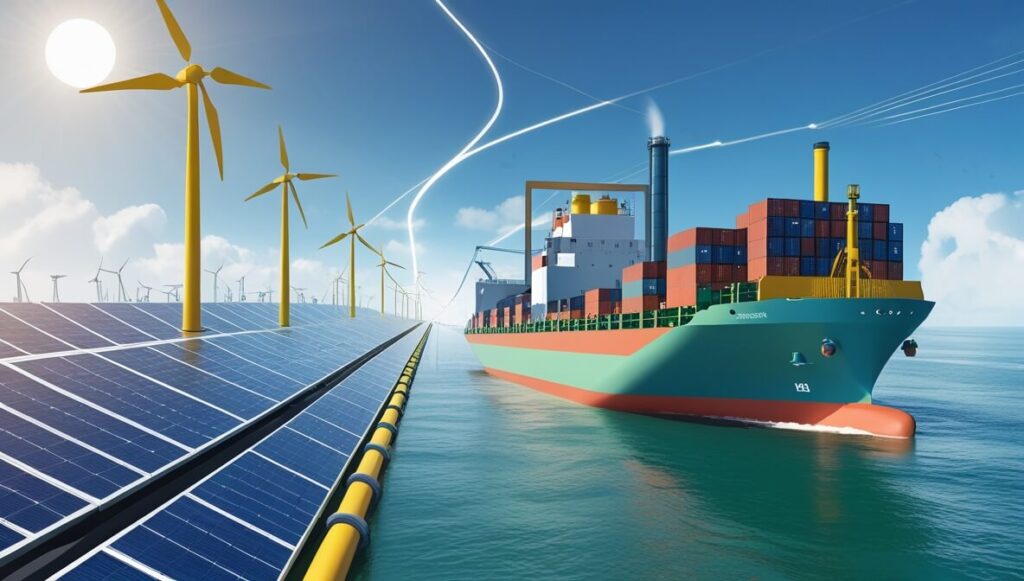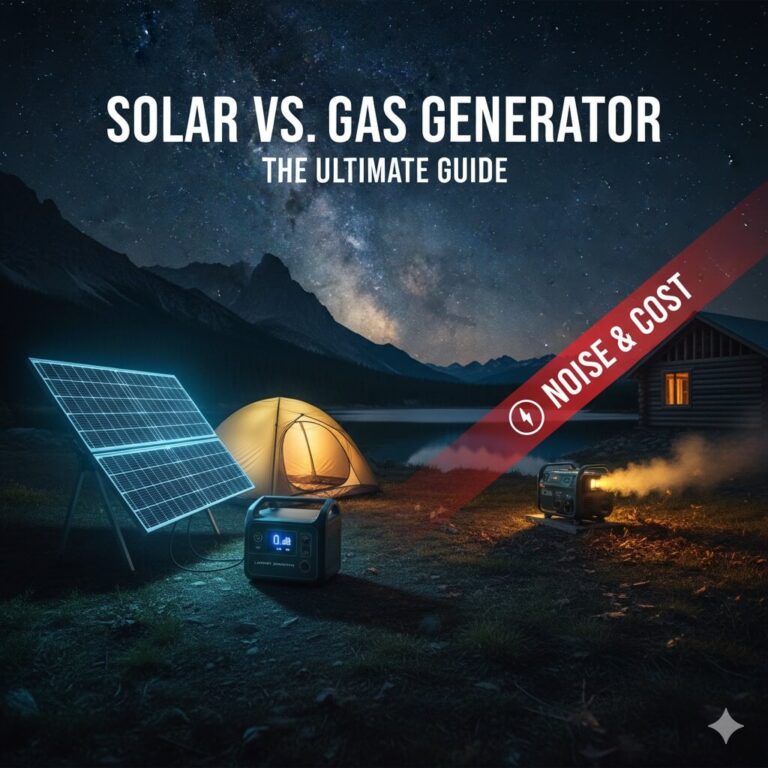The Rise of Green Hydrogen: Fueling the Future Beyond Electricity

The Rise of Green Hydrogen: Fueling the Future Beyond Electricity
When we talk about green energy, images of sprawling solar farms and majestic wind turbines typically come to mind. These are indeed cornerstones of our clean energy transition, rapidly decarbonizing electricity grids worldwide. But what about the sectors that can’t easily be “plugged in”? Industries requiring immense heat, long-haul transport, aviation, and specific chemical feedstocks still largely rely on fossil fuels. Achieving true net-zero emissions demands a solution for these challenging areas.
This is where green hydrogen emerges as a crucial, often misunderstood, solution—offering the potential to clean up the “hard-to-abate” parts of our economy. Unlike direct electricity, hydrogen is a versatile energy carrier that can be stored, transported, and converted into various forms to meet diverse industrial and mobility needs.
This article will explore the rise of green hydrogen as the essential complement to renewable electricity. We’ll delve into its production, its diverse applications in industrial and transport sectors, its current market status, and the challenges and opportunities in truly fueling a future beyond electrification.
- The Rise of Green Hydrogen: Fueling the Future Beyond Electricity
- 1. What is Green Hydrogen, and Why Does it Matter “Beyond Electricity”?
- 2. From Water to Fuel: The Production of Green Hydrogen
- 3. Unleashing Potential: Where Green Hydrogen Fuels Decarbonization
- 4. The Global Race: Current Status, Costs, and Policy Drivers (2025 Outlook)
- 5. Scaling Up: Challenges and Solutions for Green Hydrogen’s Future
- 6. The Global Hydrogen Race: Key Players and Emerging Hubs
- Conclusion: Green Hydrogen—The Bridge to a Fully Decarbonized World
- Frequently Asked Questions (FAQs) About Green Hydrogen
1. What is Green Hydrogen, and Why Does it Matter “Beyond Electricity”?
At its core, green hydrogen (H₂) is the most environmentally benign form of hydrogen. It’s produced by splitting water (H₂O) into hydrogen and oxygen (O₂) through a process called electrolysis, powered exclusively by renewable energy sources like solar, wind, or hydropower. This ensures that the entire lifecycle, from production to use, results in virtually zero carbon emissions.
Why is this “beyond electricity” focus critical? While electrification is highly efficient for light-duty vehicles and residential heating, it’s challenging or impractical for certain industries due to
- High-Temperature Heat: Industries like steel, cement, and glass require extremely high process heat (over 1000°C) that is difficult and expensive to achieve with electricity alone at scale.
- Chemical Feedstocks: Hydrogen is a crucial ingredient in producing essential chemicals like ammonia (for fertilizers) and methanol. These processes need hydrogen as a raw material, not just an energy source.
- Heavy-Duty Mobility: Long-haul trucking, shipping, and aviation demand high energy density for range and fast refueling times, which current battery technology cannot always provide efficiently.
As Professor Nigel Brandon of Imperial College notes, “If you are going for an 80% decarbonization target, you probably don’t need a lot of hydrogen. But once you go for 100%, you do.” Green hydrogen is the strategic tool to close this final 20% gap, enabling comprehensive decarbonization where direct electrification falls short. It acts as a storable, transportable energy carrier, providing flexibility and security to a grid increasingly reliant on variable renewables.

2. From Water to Fuel: The Production of Green Hydrogen
The magic behind green hydrogen production lies in electrolysis, a process where an electric current is passed through water, causing it to split into its constituent elements. The “green” designation is paramount, meaning the electricity must originate solely from renewable sources.
Three main types of electrolyzer technologies are at the forefront:
- Alkaline Electrolyzers (AEL): These are the most mature and cost-effective option, operating with good efficiency (60-70%). They use a liquid electrolyte and are robust for large-scale, continuous operation.
- Proton Exchange Membrane (PEM) Electrolyzers: Known for their ability to respond quickly to variable power inputs, making them ideal for integration with intermittent renewables like solar and wind. They are more compact but currently have higher upfront costs, often due to the use of precious metals like iridium. Research is focused on reducing these material costs and improving durability.
- Solid Oxide Electrolyzers (SOEC): Operating at high temperatures, these electrolyzers can be highly efficient, especially when they utilize waste heat from industrial processes. This can lead to very high overall energy efficiencies.
It’s important to acknowledge that converting renewable electricity to hydrogen involves energy losses (typically 20-30% during electrolysis, plus another 10-15% for compression or liquefaction for storage/transport). This reinforces that direct electrification is always the preferred route where feasible. Green hydrogen is reserved for the vital applications where its unique properties as a dense, storable, and versatile fuel carrier outweigh these conversion losses.
3. Unleashing Potential: Where Green Hydrogen Fuels Decarbonization
The true power of green hydrogen applications lies in their ability to transform sectors that are notoriously difficult to decarbonize using direct electricity. It’s the strategic key to unlocking emissions reductions in heavy industry and long-haul transport.
- Industrial Processes (The “Heavy Hitters”):
- Green Steel: Replacing coal as a reducing agent in Direct Reduced Iron (DRI) processes to create “green steel” is a game-changer. Initiatives like UNIDO’s Global Programme for Hydrogen in Industry (GPHI) are driving this shift.
- Ammonia & Methanol Production: Green hydrogen directly replaces fossil-derived hydrogen in the production of ammonia (a critical component for fertilizers) and methanol (a vital chemical feedstock), accounting for a significant portion of current global hydrogen use.
- High-Temperature Process Heat: Green hydrogen can substitute natural gas to provide the intense heat required in manufacturing processes for cement, glass, and ceramics.
- Heavy Transport (Long-Haul & Difficult-to-Electrify):
- Long-Haul Trucking & Buses: Hydrogen fuel cell electric vehicles (FCEVs) offer longer range and faster refueling times than battery electric options, making them ideal for heavy-duty applications.
- Shipping/Maritime: Green ammonia and green methanol (derived from green hydrogen) are promising marine fuels, offering higher energy density for vast ocean voyages.
- Aviation: In the future, synthetic aviation fuels (e-fuels) produced from green hydrogen could decarbonize air travel.
- Trains: Hydrogen-powered trains are already undergoing successful pilot phases in several regions, demonstrating their viability for non-electrified rail lines.
- Energy Storage & Grid Balancing: Green hydrogen acts as a crucial form of long-duration energy storage. Excess renewable electricity can be converted into hydrogen and stored for later conversion back to electricity, providing essential grid stability and reducing reliance on fossil fuel backups during periods of low renewable generation.
4. The Global Race: Current Status, Costs, and Policy Drivers (2025 Outlook)
While the promise of green hydrogen is immense, it’s still in its nascent stages. As of early 2025, only about 0.3% of global hydrogen production is truly green (Plug and Play Tech Center). Global installed electrolyzer capacity is roughly 3 GW, a significant increase from recent years but still far from what’s needed.
The primary hurdle remains cost. Green hydrogen is currently significantly more expensive than hydrogen produced from fossil fuels (often 1.5 to 6 times more expensive, according to the IEA). Current production costs range widely, from $4 to $12 per kilogram (as highlighted by Saudi Aramco CEO Amin Nasser). The ambitious target of achieving $1/kg by 2030 is now seen as overly optimistic, with experts suggesting the €2/kg threshold is likely still about a decade away. High renewable electricity costs, the price of electrolyzers, and low initial capacity utilization rates are key drivers of this expense.
However, the tide is turning rapidly due to critical policy support. The U.S. Inflation Reduction Act (IRA) is a game-changer, offering a production tax credit of up to $3/kg for clean hydrogen, making it significantly more competitive. Similar ambitious national strategies and incentives are being rolled out in the EU, Japan, Korea, India (e.g., India’s National Green Hydrogen Mission), and even developing nations like Chile, which secured a $150 million World Bank project to promote clean hydrogen. These policies are essential for bridging the cost gap and de-risking early investments. Deloitte projects the green hydrogen market revenue could reach US$1.4 trillion annually by 2050, requiring over US$9 trillion in cumulative investments.
5. Scaling Up: Challenges and Solutions for Green Hydrogen’s Future
Despite the immense potential, scaling green hydrogen faces several significant challenges. Overcoming these will be crucial for its widespread adoption.
- High Cost Barrier: As noted, current costs are prohibitive without subsidies.
- Solution: Continued robust government incentives (like the US IRA), large-scale project financing, achieving economies of scale in electrolyzer manufacturing, and strategic co-location of electrolyzers with abundant, low-cost renewable power sources.
- Infrastructure Development: A major hurdle is the limited existing infrastructure for green hydrogen’s production, specialized storage (requiring high-pressure tanks or cryogenic liquefaction), and efficient distribution (dedicated pipelines, refueling stations).
- Solution: Large-scale, coordinated public and private investment. Developing industrial hydrogen clusters (like those advocated by UNIDO) where production, consumption, and storage are co-located. Focusing on easier-to-transport derivatives like green ammonia and methanol for international trade.
- Production Capacity: The world is far from the 150 million tons of low-carbon hydrogen annually needed by 2030 to meet net-zero targets.
- Solution: Accelerating final investment decisions (FIDs) for major projects, rapidly expanding electrolyzer manufacturing capabilities, and securing dedicated, vast amounts of low-cost renewable energy.
- Technological Maturation: Improving the durability and efficiency of electrolyzers, reducing reliance on expensive rare materials in PEM technologies, and standardizing modules for easier deployment.
- Solution: Continued intensive R&D efforts, fostering strong industry collaborations, and validating technologies through pilot and demonstration projects.
- Safety & Regulatory Frameworks: Hydrogen’s flammability and small molecular size necessitate stringent safety protocols and clear, harmonized regulatory frameworks across different applications and geographies.
- Solution: Proactive engagement of regulatory bodies, developing clear international safety standards, and robust public education campaigns to build trust and acceptance.
6. The Global Hydrogen Race: Key Players and Emerging Hubs
The drive for green hydrogen has ignited a global race, with numerous countries and companies positioning themselves to be leaders in this burgeoning industry.
- Leading Nations/Regions:
- U.S.: Strong incentives via the IRA are attracting significant investment and fostering domestic production.
- Europe (Germany, Netherlands, UK): Ambitious targets, focusing on developing import hubs and industrial hydrogen clusters (e.g., plans for the Port of Hamburg).
- Australia: Blessed with vast renewable energy resources, Australia aims to be a major exporter of green hydrogen.
- Chile: Leveraging excellent solar and wind potential, Chile is actively pursuing green hydrogen production for both domestic use and export, supported by international funding.
- India: With its National Green Hydrogen Mission, India has aggressive targets and incentives to become a global hub for green hydrogen production and export.
- Saudi Arabia (NEOM): The massive NEOM Green Hydrogen Complex, a joint venture involving Air Products & ACWA Power, is set to be one of the world’s largest green hydrogen facilities, powered by 4 GW of renewables and producing 600 metric tons/day, starting in 2026.
- Key Companies Across the Value Chain:
- Electrolyzer Manufacturers: Companies like Nel Hydrogen, Plug Power, Siemens Energy, and ThyssenKrupp are rapidly scaling their manufacturing capabilities.
- Industrial Gas & Engineering Giants: Linde and Air Products & Chemicals are pivotal players, covering the entire hydrogen value chain from production and distribution to end-use applications.
- Energy Majors: Traditional oil and gas companies like BP, Shell, and TotalEnergies are increasingly investing in both blue and green hydrogen projects as part of their diversification strategies.
Conclusion: Green Hydrogen—The Bridge to a Fully Decarbonized World
The rise of green hydrogen marks a crucial turning point in the global clean energy transition. It’s not a silver bullet to replace all fossil fuels, nor is it a direct competitor to direct electrification. Instead, it is an essential complementary partner, specifically designed to unlock the decarbonization of “hard-to-abate” industrial and transport sectors that electrons simply cannot reach efficiently.
This dynamic clean fuel, powered by abundant renewables, offers the unique combination of storability, transportability, and versatility that is vital for achieving comprehensive net-zero emissions. Despite current cost and infrastructure challenges, the undeniable momentum, robust policy support, and increasing global investment signal that green hydrogen is on an irreversible path to becoming a significant, indispensable part of our future clean energy mix.
As the global energy transition accelerates, understanding green hydrogen is no longer optional. Explore the opportunities and challenges of this transformative fuel and consider its potential to reshape your industry’s decarbonization journey. Learn how green hydrogen is truly fueling a future beyond electricity.
Frequently Asked Questions (FAQs) About Green Hydrogen
- Q: What is the main difference between green, blue, and gray hydrogen?
- A: Green hydrogen is produced using renewable electricity to split water, resulting in zero carbon emissions. Gray hydrogen is produced from fossil fuels (usually natural gas) with associated carbon emissions. Blue hydrogen is also produced from fossil fuels but with carbon capture and storage (CCS) technology to reduce emissions.
- Q: Why can’t we just electrify everything with solar and wind?
- A: While direct electrification is efficient for many uses, it’s impractical for sectors requiring very high temperatures (like steel production), specific chemical feedstocks, or extremely high energy density for long-haul transport (shipping, aviation). Green hydrogen addresses these “hard-to-abate” sectors.
- Q: Is green hydrogen currently cost-competitive with fossil fuels?
- A: Not yet. Green hydrogen is currently significantly more expensive than fossil-derived hydrogen. However, government policies like the U.S. Inflation Reduction Act (IRA) and technological advancements are rapidly driving down costs, aiming for competitiveness in the coming decade.
- Q: What are the biggest challenges for scaling up green hydrogen production?
- A: Key challenges include high production costs, the need for vast amounts of dedicated renewable energy, developing extensive infrastructure for storage and transport, and continued technological improvements in electrolyzer efficiency and durability.
- Q: What are the main applications for green hydrogen?
- A: Its primary applications are in decarbonizing heavy industry (e.g., green steel, ammonia production, process heat) and heavy-duty transport (e.g., long-haul trucking, shipping, aviation fuels). It also serves as a crucial form of long-duration energy storage for electricity grids.



